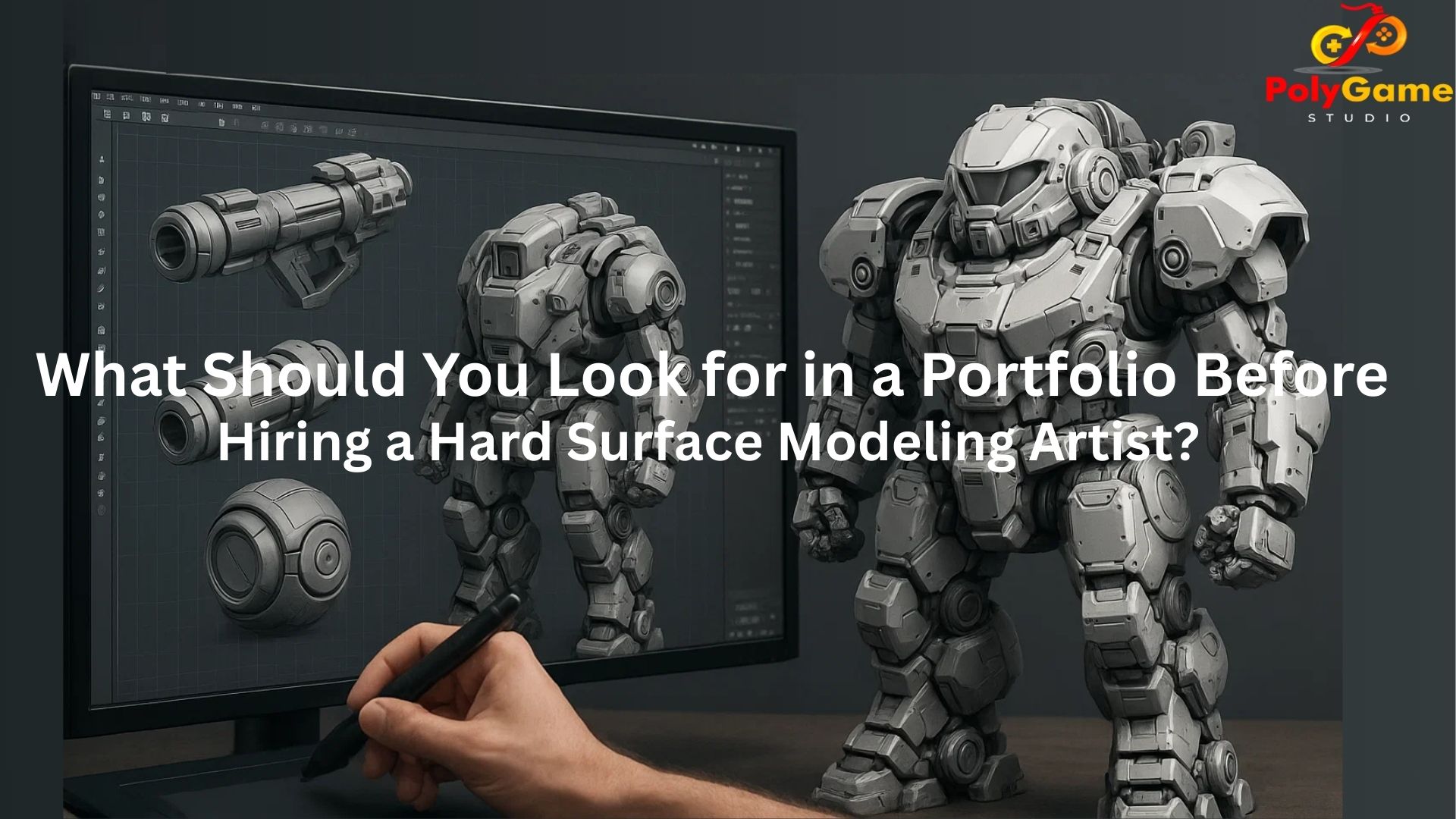Beyond the Shine: What Should You Look for in a Portfolio Before Hiring a Hard Surface Modeling Artist?
In the competitive landscape of game development, the visual fidelity of your assets can significantly impact player engagement and the overall success of your project. When it comes to creating intricate weaponry, sleek vehicles, robust architecture, and believable mechanical parts, the expertise of a Hard Surface Modeling artist is paramount. But with a sea of portfolios out there, how do you discern true talent from fleeting proficiency? What specific elements should you scrutinize to ensure you’re entrusting your valuable project to the right hands specializing in Hard Surface Modeling for Games? This guide will delve into the key aspects to evaluate in a portfolio before making that crucial hiring decision, particularly when seeking a skilled professional in Hard Surface Modeling .
1. Mastery of Form and Silhouette:
At its core, Hard Surface Modeling is about accurately capturing the essence of non-organic objects.
- Look For: Models with clean, well-defined silhouettes that are instantly recognizable. 3D objects should feel like they have a clear sense of weight and presence. An artist understands a shape by observing how it looks from different angles.
- Red Flags: Models that appear lumpy, distorted, or lack a strong, readable shape. This refers to a design where proportions are inconsistent or certain details seem unconnected and added on rather than being a natural part of the overall design.
2. Precision in Detail and Cleanliness of Execution:
Hard Surface Modeling for Games needs attention to detail. The portfolio should demonstrate the artist’s ability to create crisp edges, accurate paneling, believable wear and tear (if applicable), and intricate mechanical elements.
- Look For: Models with clean and consistent detailing. Sharp bevels on edges that catch the light realistically, well-defined panel lines that feel intentional, and believable placement of bolts, vents, and other mechanical components. Close-up renders should reveal the level of precision.
- Red Flags: Jagged or inconsistent edges, blurry or poorly defined details, and a general lack of refinement. Excessive “noise” or unnecessary surface imperfections that don’t contribute to the realism or style.
3. Understanding of Topology for Games:
While visual appeal is crucial, a game-ready 3D Hard Surface Model must also be optimized for performance. The portfolio should provide glimpses into the artist’s understanding of game-specific topology.
- Look For: Wireframe views of models (if provided) that reveal clean, efficient polygon flow. Evidence of edge loops that follow the form and anticipate potential deformation (though hard surface models deform less than organic ones, proper topology aids in shading and potential damage states). A reasonable polygon count appropriate for the complexity of the asset.
- Red Flags: Messy, chaotic wireframes with excessive triangles or n-gons, especially in areas with curves or intricate details. Models that appear unnecessarily dense without a clear visual benefit. Artists who only present high-poly renders without any indication of game-readiness.
4. Proficiency in Texturing and Materials:
The portfolio should highlight the artist’s ability to create believable and visually appealing materials relevant to Hard Surface Modeling.
- Look For: Models with well-applied textures that demonstrate an understanding of PBR (Physically Based Rendering) principles. Realistic material properties such as metal reflectivity, surface roughness, and the subtle interplay of light and shadow.
- Red Flags: Blurry, low-resolution textures, inconsistent material properties, obvious tiling patterns, and a lack of understanding of how light interacts with different surfaces.
5. Variety and Versatility (If Applicable):
The Artist’s ability to model a range of hard surface objects, demonstrating adaptability and skillset within 3D Hard Surface Modeling.
- Look For: A portfolio that includes different types of hard surface assets, such as vehicles, weapons, robots, architectural elements, props, and machinery. This indicates the artist isn’t limited to a single niche within Hard Surface Modeling for Games.
- Red Flags: A portfolio that heavily focuses on only one type of asset, especially if your project requires a diverse range of hard surface models.
6. Presentation and Attention to Detail (Beyond the Model Itself):
The way an artist presents their work in their portfolio can also offer valuable insights into their professionalism and attention to detail.
- Look For: Clean and well-organized presentations with clear renders from multiple angles, including close-ups. Brief descriptions outlining the project context (if any) and the artist’s role.
- Red Flags: Poorly lit or blurry renders that obscure details, disorganized or cluttered presentations, a lack of information about the models, and inconsistent rendering styles that make it difficult to accurately assess the artist’s skill.
PolyGame Studio: Your Partner in Exceptional Hard Surface Modeling
At PolyGame Studio, our team of experienced artists boasts a deep understanding of form, topology, texturing, and optimization techniques essential for crafting top-tier Hard Surface Modeling for Games assets. We pride ourselves on delivering 3D hard Surface Modeling that not only meets the highest artistic standards but also adheres to strict performance requirements for seamless integration into your game engine.
When you review our portfolio, you’ll find a diverse range of expertly crafted Hard Surface Modeling examples, showcasing our proficiency in creating everything from intricate weapon designs and detailed vehicles to robust architectural elements and complex mechanical components. We are committed to providing exceptional 3D Hard Surface Modeling services that elevate the visual quality of your project and contribute to a truly immersive player experience. Our meticulous attention to detail in every stage of the 3D Hard Surface Modeling process ensures that your assets are both visually stunning and technically sound.
Conclusion: Investing in Expertise
Hiring a Hard Surface Modeling artist is a significant investment in your game’s visual quality. By carefully evaluating their portfolio with a keen eye for form, detail, topology, texturing, and presentation, you can make an informed decision and secure a talented professional. Don’t just be wowed by the shine; delve deeper into the execution and technical understanding to ensure you’re partnering with an artist who can truly elevate your game.








